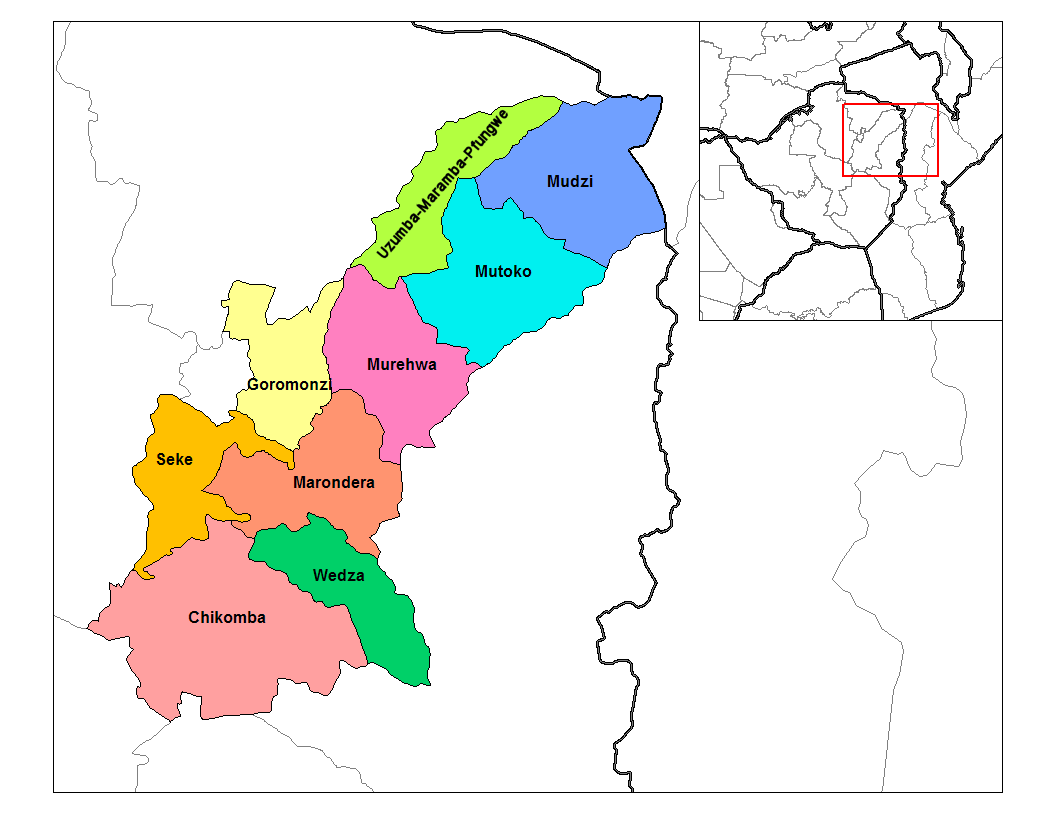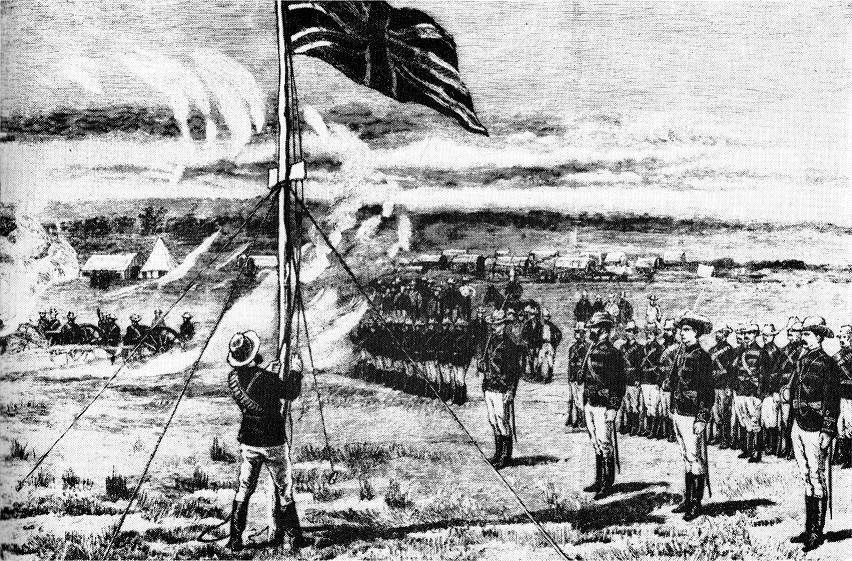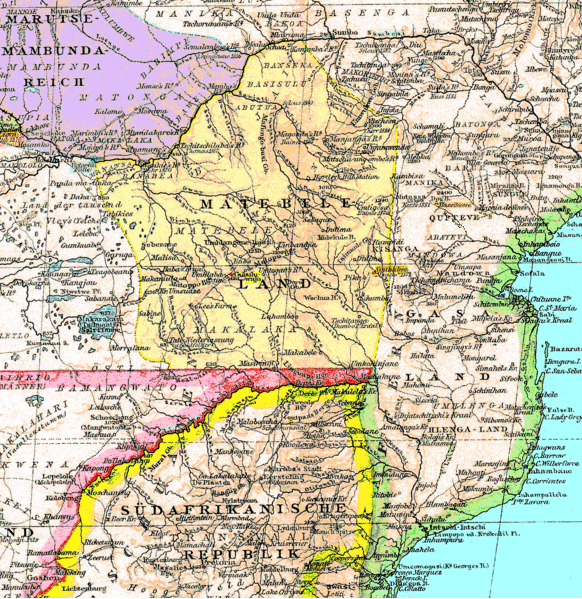|
Kwenda Mission
Kwenda Mission High School is an 'O' and 'A' Level boarding school in Mashonaland East Province in Zimbabwe. The school is situated about 150 km south of the capital city Harare. Located in the Chikomba Area, Kwenda Mission High School offers "O" and "A" Level education for both girls and boys. The mission was opened in 1892 by Methodist (Wesley) Missionaries. Mr Chiwenga is the current headmaster and Rev J Mangiza is the current principal as well as chief administrator of the institution. It is one of the 9 mission schools run by the Methodist Church in Zimbabwe. Its sister schools are Waddilove High School in Marondera, Chemhanza High School in Wedza, Tekwane Mission in Matebeleland, which was among the first mission stations opened by the missionaries in the 19th century, Sandringham High School in Norton, Pakame High School in Shurugwi ,Moleli High School Moleli High School, is a co-education high school located in Mashonaland West Province, Makwiro, Chegutu Dist ... [...More Info...] [...Related Items...] OR: [Wikipedia] [Google] [Baidu] |
Boarding School
A boarding school is a school where pupils live within premises while being given formal instruction. The word "boarding" is used in the sense of "room and board", i.e. lodging and meals. As they have existed for many centuries, and now extend across many countries, their functioning, codes of conduct and ethos vary greatly. Children in boarding schools study and live during the school year with their fellow students and possibly teachers or administrators. Some boarding schools also have day students who attend the institution by day and return off-campus to their families in the evenings. Boarding school pupils are typically referred to as "boarders". Children may be sent for one year to twelve years or more in boarding school, until the age of eighteen. There are several types of boarders depending on the intervals at which they visit their family. Full-term boarders visit their homes at the end of an academic year, semester boarders visit their homes at the end of an acade ... [...More Info...] [...Related Items...] OR: [Wikipedia] [Google] [Baidu] |
Mashonaland East Province
Mashonaland East, informally Mash East, is a province of Zimbabwe. It has an area of 32,230 km2 and a population of approximately 1.35 million (2012). Marondera is the capital of the province. Geography Districts Mashonaland East is divided into nine districts: * Chikomba * Goromonzi * Marondera * Mudzi * Murehwa (Mrehwa) * Mutoko * Seke * Uzumba-Maramba-Pfungwe (UMP) * Wedza (Hwedza) Education See also * Provinces of Zimbabwe * Districts of Zimbabwe The Republic of Zimbabwe is broken down into 10 administrative provinces, which are divided into 59 districts and 1,200 wards. Bulawayo Province * Bulawayo Harare Province * Harare Manicaland Province * Buhera * Chi ... Notes External links * Provinces of Zimbabwe {{Zimbabwe-gov-stub ... [...More Info...] [...Related Items...] OR: [Wikipedia] [Google] [Baidu] |
Zimbabwe
Zimbabwe (), officially the Republic of Zimbabwe, is a landlocked country located in Southeast Africa, between the Zambezi and Limpopo Rivers, bordered by South Africa to the south, Botswana to the south-west, Zambia to the north, and Mozambique to the east. The capital and largest city is Harare. The second largest city is Bulawayo. A country of roughly 15 million people, Zimbabwe has 16 official languages, with English, Shona language, Shona, and Northern Ndebele language, Ndebele the most common. Beginning in the 9th century, during its late Iron Age, the Bantu peoples, Bantu people (who would become the ethnic Shona people, Shona) built the city-state of Great Zimbabwe which became one of the major African trade centres by the 11th century, controlling the gold, ivory and copper trades with the Swahili coast, which were connected to Arab and Indian states. By the mid 15th century, the city-state had been abandoned. From there, the Kingdom of Zimbabwe was established, fol ... [...More Info...] [...Related Items...] OR: [Wikipedia] [Google] [Baidu] |
Harare
Harare (; formerly Salisbury ) is the Capital city, capital and most populous city of Zimbabwe. The city proper has an area of 940 km2 (371 mi2) and a population of 2.12 million in the 2012 census and an estimated 3.12 million in its metropolitan area in 2019. Situated in north-eastern Zimbabwe in the country's Mashonaland region, Harare is a metropolitan Harare Province, province, which also incorporates the municipalities of Chitungwiza and Epworth, Zimbabwe, Epworth. The city sits on a plateau at an elevation of above sea level and its climate falls into the subtropical highland category. The city was founded in 1890 by the Pioneer Column, a small military force of the British South Africa Company, and named Fort Salisbury after the UK Prime Minister Robert Gascoyne-Cecil, 3rd Marquess of Salisbury, Lord Salisbury. Company Company rule in Rhodesia, administrators demarcated the city and ran it until Southern Rhodesia achieved responsible government in 1923. Salisb ... [...More Info...] [...Related Items...] OR: [Wikipedia] [Google] [Baidu] |
Waddilove High School
{{unreferenced, date=March 2012 The history and foundation of the MCZ Methodism was founded by John and Charles Wesley in the 1730s in Britain. The duo were Anglican Priests; John was an evangelist and Charles a musician. This is the church John Wesley played a significant role in until the LORD took him to eternal rest in 1791. His parting words on his death bed were, “''the best of all is, God is with us''.” This statement became the motto for all Wesleyans. Wesley preached to both North American and European continents. During and after his death, Methodism started to expand to Africa, Asia, Europe, North and Central America. In Africa the first port of call was West Africa, Sierra Leone in 1811. In 1816, the Missionaries landed in Cape Town, South Africa. Through these inroads, Methodism started to spread to most parts of Africa such as Gambia in 1820, Gold Cost in 1839, Nigeria in 1842 and Zimbabwe in 1891. The first Missionaries to evangelize in Zimbabwe came under the ... [...More Info...] [...Related Items...] OR: [Wikipedia] [Google] [Baidu] |
Marondera
Marondera (known as Marandellas until 1982) is a city in Mashonaland East, Zimbabwe, located about 72 km east of Harare. History It was first known as Marandella's Kraal, corrupted from Marondera, chief of the ruling VaRozvi people who lived in the area. British colonialists as they were colonizing Zimbabwe, first used it as a rest stop on the way to Harare. Later destroyed in the Shona resistance of 1896, the town was moved 4 miles (6 km) north to the Beira–Bulawayo railway line. Constituted a village in 1913, it became a town in 1943. During the South African (Boer) War it was used by the British as a staging point for military operations into the Transvaal, and in World War II it was a refuge for displaced Poles. Demographics Marondera is a multicultural city, with a variety of ethnic groups and a Shona majority. Within the African population is a notable proportion of people of Malawian origin whose parents migrated and took employment on the white o ... [...More Info...] [...Related Items...] OR: [Wikipedia] [Google] [Baidu] |
Wedza
Wedza (or Hwedza) is a district in the province of Mashonaland East, Zimbabwe. It is located about south of Marondera, and south of Harare. The area was sparsely inhabited by the Mbire people of the Soko Clan as early inhabitants who mined iron in the Hwedza hills during the 9th-12th centuries which means "a place of wealth". A village of Wedza was established in 1910 by Colonial administration. Gold, beryl, nickel, tungsten and grayite were mined in the hills around the village but deposits were too small to make further commercial mining viable. Etymology The word Wedza literally translates to "the lighting of the sun", or "twilight", and myth has it that the word is derived from the location of the ancient town, which was found on the other side of a deep forest. Pre-Colonial era Wedza was called Mbire. It was a very important area because of the iron which was mined in the Wedza mountain. The iron was important for both wealth and ceremonial purposes. The iron was fashioned ... [...More Info...] [...Related Items...] OR: [Wikipedia] [Google] [Baidu] |
Matebeleland
Matabeleland is a region located in southwestern Zimbabwe that is divided into three provinces: Matabeleland North, Bulawayo, and Matabeleland South. These provinces are in the west and south-west of Zimbabwe, between the Limpopo and Zambezi rivers and are further separated from Midlands by the Shangani River in central Zimbabwe. The region is named after its inhabitants, the Ndebele people who were called "Amatabele"(people with long spears - Mzilikazi 's group of people who were escaping the Mfecani wars). Other ethnic groups who inhabit parts of Matabeleland include the Tonga, Bakalanga, Venda, Nambya, Khoisan, Xhosa, Sotho, Tswana, and Tsonga. The population of Matabeleland is just over 20% of the Zimbabwe's total. The capital and largest city is Bulawayo, other notable towns are Plumtree, Victoria Falls, Beitbridge, Lupane, Esigodini, Hwange and Gwanda. The land is fertile but semi arid. This area has coal and gold deposits. Industries include gold and ot ... [...More Info...] [...Related Items...] OR: [Wikipedia] [Google] [Baidu] |
Sandringham High School
Sandringham High School is a Zimbabwean Methodist Church school located 25 km from the town of Norton and 65 km from Harare. It is a mixed school that offers educational services up to Form 6. Academic excellence has always been the top focus. The school has consistently managed to maintain a top position in Zimbabwe. History The Methodist Church in Zimbabwe acquired a farm next to Chibero College of Agriculture in Chivero communal lands, Mhondoro Paddington Mhondoro (27 September 1986 – 13 March 2015) was a Zimbabwean cricketer who played a single limited overs match for Mid West Rhinos during the 2013–14 season. Born in Gweru, in Zimbabwe's Midlands Province, Mhondoro attended Chi ..., so it could build a church and school to facilitate the settlement of church members. The school taught primary school and secondary school levels. The campus was hosted multiple buildings, including school blocks, residencies for boys and girls, sports fields, and teacher' ... [...More Info...] [...Related Items...] OR: [Wikipedia] [Google] [Baidu] |
Norton, Zimbabwe
Norton is a commuter town in the province of Mashonaland West, Zimbabwe near Harare. It is located about 40 km west of Harare on the main road and railway line connecting Harare and Bulawayo. Demographics According to the 1982 Population Census, the town had a population of 12,360. This rose to 20,405 in the 1992 census 44,054 in the 2002 census,Zimbabwe Ministry of Environment and Tourism: 3rd National Report of the NAP "Process in the Context of the UNCCD", 2004. and 67,591 in the 2012 census. History The settlement began in 1914 when a railway siding was built. The town was named after the Norton family who were farming in the area since the 1890s and were killed in the First ''Chimurenga'' in 1896. The town grew as an administrative and commercial hub in a rich agricultural area. It later developed into a key industrial centre due to its proximity to water and power supplies, with a main intake point from the Lake Kariba hydroelectric dam to the national grid locate ... [...More Info...] [...Related Items...] OR: [Wikipedia] [Google] [Baidu] |
Shurugwi
Shurugwi, formerly Selukwe, is a small town and administrative centre in Midlands Province, southern Zimbabwe, located about 350 km (220 miles) south of Harare, with a population of 22,900 according to the 2022 census. The town was established in 1899 on the Selukwe Goldfield, which itself was discovered in the early 1890s not long after the annexation of Rhodesia by the Pioneer Column. The town lies in well wooded, hilly and picturesque country at an altitude of about 1,440 metres (4700') and is well watered having a typical annual rainfall of 89 cm (3'). On a clear day it is quite possible to see the hills around Masvingo and Great Zimbabwe, the latter being over 145 km (90 miles) away. History Selukwe was established in 1899 by the British South Africa Company and Willoughby's Consolidated Company. Its name was derived from a nearby bare oval granite hill that resembled the shape of a pigpen (''selukwe'') of the local Karanga people. The district remains an ... [...More Info...] [...Related Items...] OR: [Wikipedia] [Google] [Baidu] |
Moleli High School
Moleli High School, is a co-education high school located in Mashonaland West Province, Makwiro, Chegutu District, Msengezi area near the town of Norton in the Zvimba area, 80 kilometres southwest of the Zimbabwean capital Harare. It offers O' and A' levels in boarding facilities. It was established in 1962 by Ronald E. Sellers of the Methodist Church in Zimbabwe and named after the late Methodist Rev. Modumedi Moleli and is a Methodist mission school. Moleli has a student population of about 620 pupils, and is considered one of Zimbabwe's top performing high schools. It is a sister school to Sandringham High School which they share sibling rivalry. The school moto "Tsvakai Chokwadi Kuyamura Vamwe" is Shona meaning "seek the truth to help others". The school has been known for the Chivero Boat disaster in which 22 form 1 students were killed when their boat capsized at Lake Chivero. The school also made headlines when a mysterious hysteria hit some of the female students. In addit ... [...More Info...] [...Related Items...] OR: [Wikipedia] [Google] [Baidu] |


